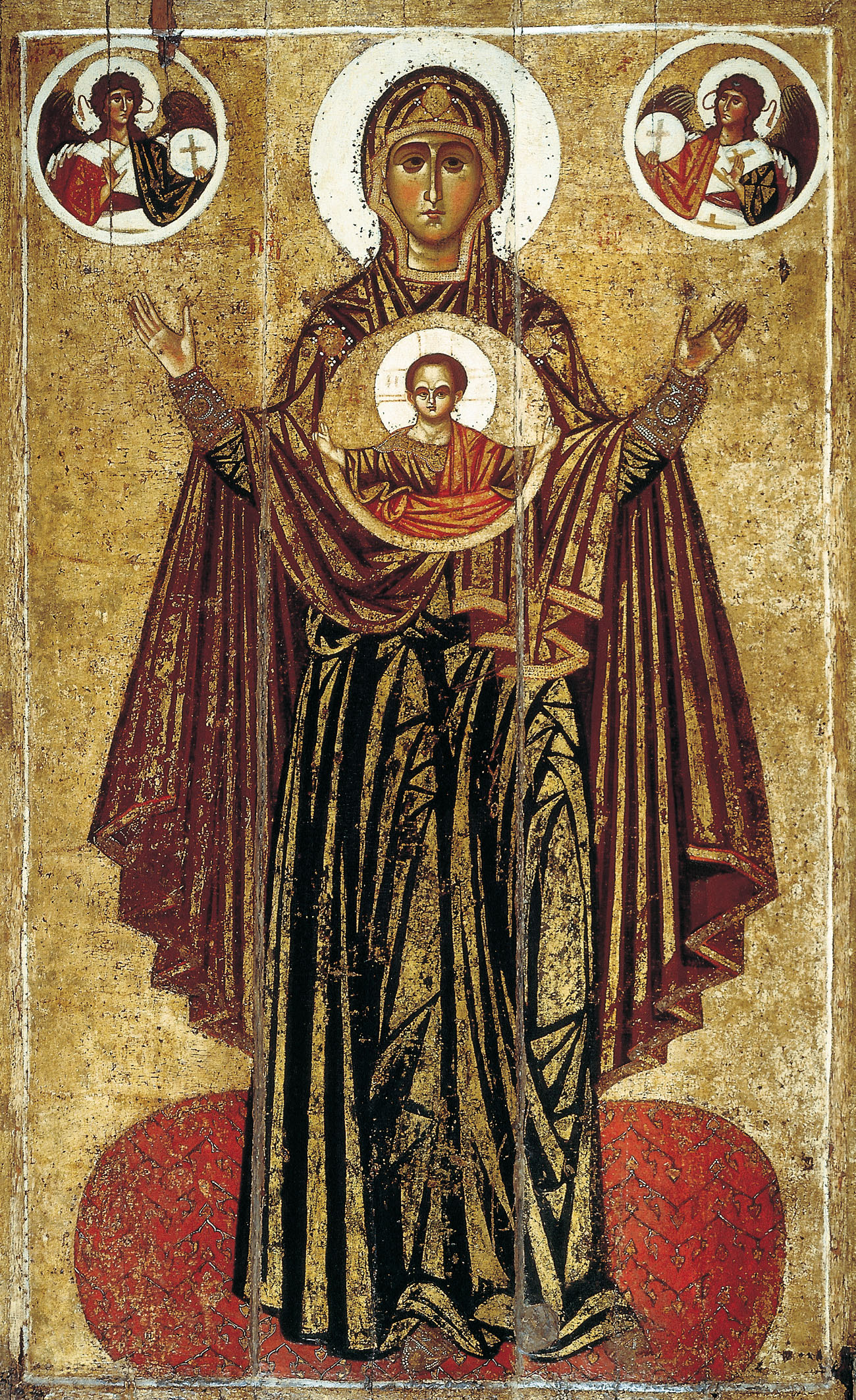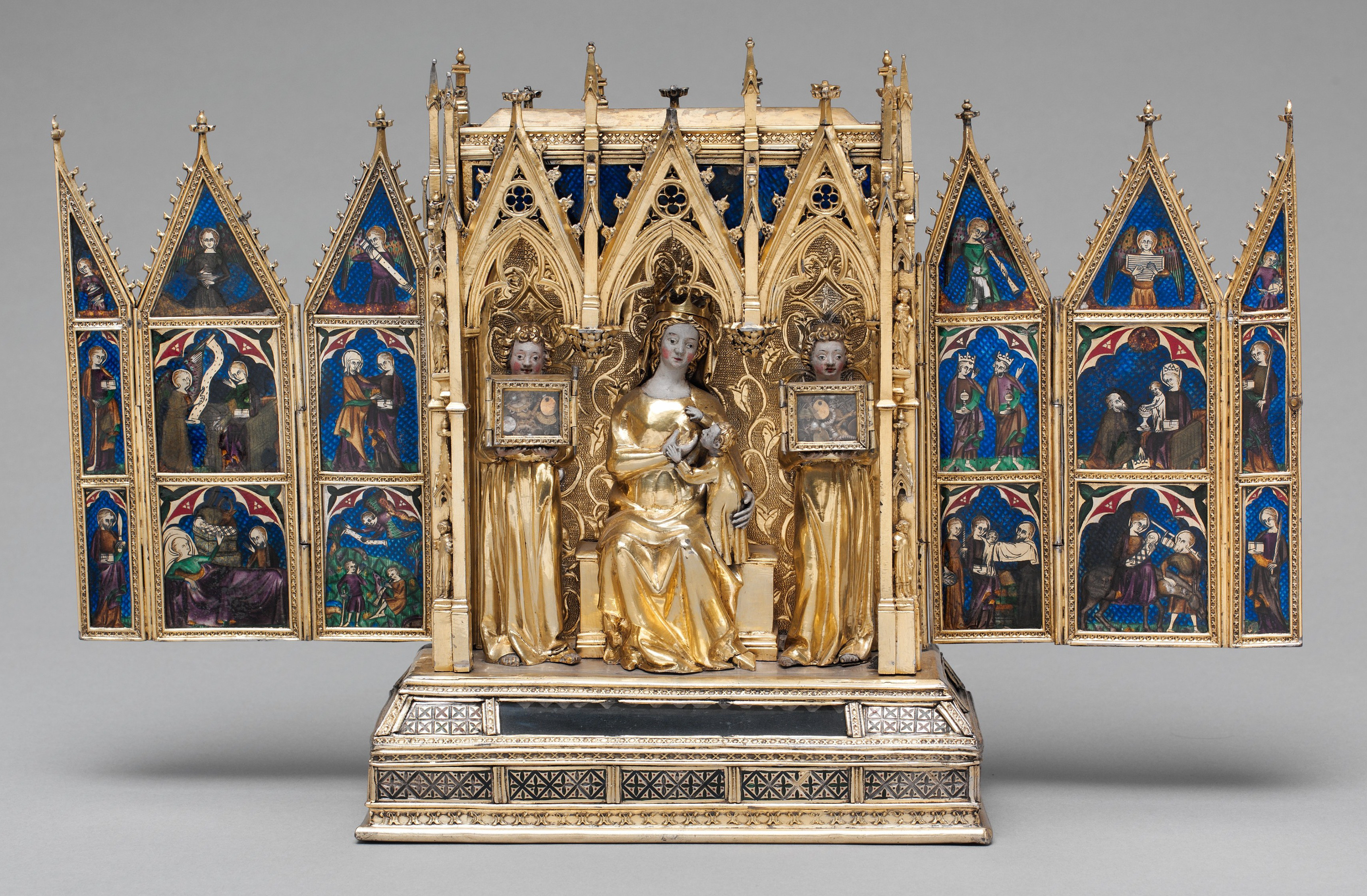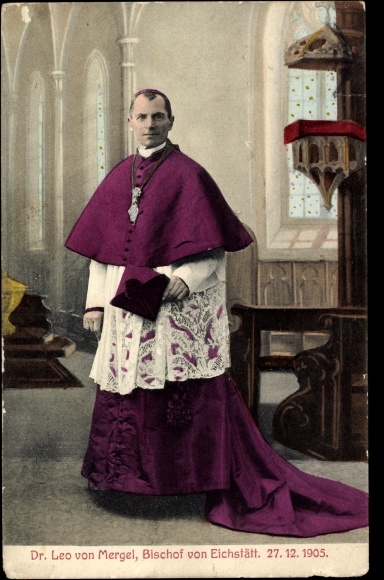|
Engolpion
An encolpion (also engolpion, enkolpion; Greek: ἐγκόλπιον, ''enkólpion'', "on the chest"; plural: ἐγκόλπια, ''enkólpia'') is a medallion with an icon in the center worn around the neck by Eastern Orthodox and Eastern Catholic bishops. The icon is normally surrounded by jewels (usually paste) and topped by an Eastern-style mitre. It often also has a small jewelled pendant hanging down at the bottom. The engolpion is suspended from the neck by a long gold chain, sometimes made up of intricate links. A portion of the chain will often be joined together with a small ring behind the neck so that it hangs down the back. Engolpia come in many different shapes, including oval, rhombus, square, or a double-headed eagle. In antiquarian contexts, an "encolpion cross" is a pectoral cross of the Byzantine period. History According to St. Jerome, however (in Matt., c. xxiii), some of the faithful in his day attached a superstitious importance to these aids to piety; he censu ... [...More Info...] [...Related Items...] OR: [Wikipedia] [Google] [Baidu] |
Vestments
Vestments are liturgical garments and articles associated primarily with the Christian religion, especially by Eastern Churches, Catholics (of all rites), Lutherans, and Anglicans. Many other groups also make use of liturgical garments; among the Reformed (Calvinist) Churches this was a point of controversy in the Protestant Reformation and sometimes since, in particular during the ritualist controversies in the Church of England in the 19th century. Origins In the early Christian churches, officers and leaders, like their congregations, wore the normal dress of civil life in the Greco-Roman world, although with an expectation that the clothing should be clean and pure during holy observances. From the 4th century onward, however, modifications began to be made to the form of the garments, and, as secular fashions changed from the 6th century, the church retained the original forms of their garments, although with separate development and with regional variations. Having ... [...More Info...] [...Related Items...] OR: [Wikipedia] [Google] [Baidu] |
Patriarch Alexius II
Patriarch Alexy II (or Alexius II, ; secular name Aleksei Mikhailovich Ridiger ; 23 February 1929 – 5 December 2008) was the 15th Patriarch of Moscow and all Rus', the primate of the Russian Orthodox Church. Elected Patriarch of Moscow in 1990, eighteen months before the dissolution of the Soviet Union, he became the first Russian Patriarch of the post-Soviet period. Family history Alexey Mikhailovich Ridiger was a patrilineal descendant of a Baltic German noble family. His father, Mikhail Aleksandrovich Ridiger (1900–1960), was a descendant of Captain Heinrich Nikolaus (Nils) Rüdinger, commander of a Swedish fortification in Daugavgrīva, Swedish Livonia and knighted by Charles XI of Sweden in 1695. Swedish Estonia and Swedish Livonia became part of the Russian Empire in the aftermath of the Great Northern War, in the beginning of the 18th century. Friedrich Wilhelm von Rüdiger (1780–1840), adopted Orthodox Christianity during the reign of Catherine the Grea ... [...More Info...] [...Related Items...] OR: [Wikipedia] [Google] [Baidu] |
Panagia
Panagia (, fem. of , + , the ''All-Holy'', or the ''Most Holy''; pronounced ) (also transliterated Panaghia or Panayia), in Medieval and Modern Greek, is one of the titles of Mary, Mother of God, used especially in Orthodox Christianity and Eastern Catholicism. Most Greek churches dedicated to the Virgin Mary are called ''Panagia''; the standard western Christian designation of "St. Mary" is rarely used in the East, as Mary is considered the holiest of all created beings and therefore of the highest status and glory of all the saints. Iconography ''Panagia'' is also the term for a particular type of icon of the Theotokos, wherein she is facing the viewer directly, usually depicted full length with her hands in the ''orans'' position, and with a medallion showing the image of Christ as a child in front of her chest. This medallion symbolically represents Jesus within the womb of the Virgin Mary at the moment of the Incarnation. This type of icon is also called the ''Platyté ... [...More Info...] [...Related Items...] OR: [Wikipedia] [Google] [Baidu] |
Eastern Christian Vestments
Eastern or Easterns may refer to: Transportation Airlines *China Eastern Airlines, a current Chinese airline based in Shanghai * Eastern Air, former name of Zambia Skyways *Eastern Air Lines, a defunct American airline that operated from 1926 to 1991 *Eastern Air Lines (2015), an American airline that began operations in 2015 *Eastern Airlines, LLC, previously Dynamic International Airways, a U.S. airline founded in 2010 *Eastern Airways, an English/British regional airline *Eastern Provincial Airways, a defunct Canadian airline that operated from 1949 to 1986 Roads *Eastern Avenue (other), various roads *Eastern Parkway (other), various parkways *Eastern Freeway, Melbourne, Australia *Eastern Freeway Mumbai, Mumbai, India Other *Eastern Railway (other), various railroads *, a cargo liner in service 1946-65 Education *Eastern University (other) *Eastern College (other) Sports * Easterns (cricket team), South African cri ... [...More Info...] [...Related Items...] OR: [Wikipedia] [Google] [Baidu] |
Eucharist
The Eucharist ( ; from , ), also called Holy Communion, the Blessed Sacrament or the Lord's Supper, is a Christianity, Christian Rite (Christianity), rite, considered a sacrament in most churches and an Ordinance (Christianity), ordinance in others. Christians believe that the rite was instituted by Jesus at the Last Supper, the night before Crucifixion of Jesus, his crucifixion, giving his Disciple (Christianity), disciples bread and wine. Passages in the New Testament state that he commanded them to "do this in memory of me" while referring to the bread as "my body" and the cup of wine as "the blood of my covenant, which is poured out for many". According to the synoptic Gospels, this was at a Passover meal. The elements of the Eucharist, sacramental bread, either Leavening agent, leavened or Unleavened bread, unleavened, and sacramental wine (non-alcoholic grape juice in some Protestantism, Protestant traditions, such as Methodism), are consecrated on an altar or a communio ... [...More Info...] [...Related Items...] OR: [Wikipedia] [Google] [Baidu] |
Reliquary
A reliquary (also referred to as a ''shrine'', ''Chasse (casket), chasse'', or ''phylactery'') is a container for relics. A portable reliquary, or the room in which one is stored, may also be called a ''feretory''. Relics may be the purported or actual physical remains of saints, and may comprise bones, pieces of clothing, or some object associated with saints or with other religious figures. The authenticity of any given relic is often a matter of debate; for that reason, some churches require documentation of a relic's provenance. Relics have long been important to Buddhism, Buddhists, Christianity , Christians, Hinduism , Hindus, and to followers of many other religions. These cultures often display reliquaries in shrines, churches, or temples to which the faithful make pilgrimages to gain blessings. The term is sometimes used in a looser sense to mean a container for the remains of any important figure, even non-religious ones. In particular, the kings of France often spe ... [...More Info...] [...Related Items...] OR: [Wikipedia] [Google] [Baidu] |
Subdeacon
Subdeacon is a minor orders, minor order of ministry for men or women in various branches of Christianity. The subdeacon has a specific liturgical role and is placed below the deacon and above the acolyte in the order of precedence. Subdeacons in the Eastern Orthodox Church A subdeacon, also called hypodeacon, is the highest of the minor orders of clergy in the Eastern Orthodox Church. This order is higher than the Reader (liturgy), reader and lower than the deacon. Canonical discipline Like the reader, the clerical street-dress of the subdeacon is the cassock, which is usually black but only need be so if he is a monk. This is symbolic of their suppression of their own tastes, will, and desires, and their canonical obedience to God, their bishop, and the liturgical and canonical norms of the Church. As a concession in countries where Eastern Orthodoxy is little known, many only wear the cassock when attending liturgies or when moving about the faithful on church business. In so ... [...More Info...] [...Related Items...] OR: [Wikipedia] [Google] [Baidu] |
Protodeacon
Protodeacon derives from the Greek ''proto-'' meaning 'first' and ''diakonos'', which is a standard ancient Greek word meaning "assistant", "servant", or "waiting-man". The word in English may refer to any of various clergy, depending upon the usage of the particular church in question. Eastern Orthodox and Eastern Catholic churches Protodeacon is an honorific rank given to certain married deacons in Eastern Christian churches. In the Russian Orthodox Church it is an honorary title given to married deacons, as a mark of which, the clergyman is entitled to wear a burgundy-colored skufia. The equivalent rank for hierodeacons—i.e., monastic deacons—is archdeacon. The senior deacon of a cathedral or principal church may be awarded the title of protodeacon. In the Greek usage, the chief deacon who is attached to the person of a bishop is called an archdeacon. In the Slavic usage a protodeacon or archdeacon wears a distinctive orarion (deacon's stole). The title of protodeacon ... [...More Info...] [...Related Items...] OR: [Wikipedia] [Google] [Baidu] |
Divine Liturgy
Divine Liturgy () or Holy Liturgy is the usual name used in most Eastern Christian rites for the Eucharistic service. The Eastern Catholic Churches, Eastern Lutheranism, Eastern Lutheran Churches and the Eastern Orthodox Church believe the Divine Liturgy transcends both time and the world. All believers are seen as united in worship in the Kingdom of God along with the departed saints and the angels of heaven. Everything in the liturgy is seen as symbolic, but not merely so, for it makes present the unseen reality. According to Eastern tradition and belief, the liturgy's roots go back to the adaptation of Jewish liturgy by Early Christians. The first part, termed the "Liturgy of the Catechumens", includes the Lection, reading of scriptures like those in a synagogue, and in some places, also a Sermon#Christianity, sermon/homily. The second half, the "Liturgy of the Faithful", is based on the Last Supper and the first Eucharistic celebrations by Early Christians. Eastern Christian ... [...More Info...] [...Related Items...] OR: [Wikipedia] [Google] [Baidu] |
Choir Dress
Choir dress is the traditional vesture of the clerics, seminary, seminarians and religious order, religious of Christian churches worn for public prayer and the administration of the sacraments except when celebrating or Concelebration, concelebrating the Eucharist. It differs from the vestments worn by the celebrants of the Eucharist, being normally made of fabrics such as wool, cotton or silk, as opposed to the fine brocades used in vestments. It may also be worn by lay assistants such as acolytes and choirs. It was abandoned by most of the Protestant churches that developed from the sixteenth-century Reformation. Like vestments, Eucharistic vestments, choir dress derived originally from the formal secular dress of the Roman Empire in the first centuries of the Christian era. This survived in church usage after fashion had changed. Choir dress differs from "house dress," which is worn outside of a liturgical context (whether in the house or on the street). House dress may ... [...More Info...] [...Related Items...] OR: [Wikipedia] [Google] [Baidu] |
Archimandrite
The title archimandrite (; ), used in Eastern Christianity, originally referred to a superior abbot ('' hegumenos'', , present participle of the verb meaning "to lead") whom a bishop appointed to supervise several "ordinary" abbots and monasteries, or as the abbot of some especially great and important monastery. In the Eastern Orthodox Church and the Eastern Catholic Churches, "archimandrite" is most often used purely as a title of honor (with no connection to any actual monastery) and is bestowed on a hieromonk as a mark of respect or gratitude for service to the Church. This title is only given to those priests who have been tonsured monks, while distinguished non-monastic (typically married) priests would be given the title of protopresbyter. In history, some women were able to obtain that title, notably when cross-dressing as male monks, such as Susanna the Deaconess. History The term ' derives from the Greek: the first element from ''archi-'' meaning "highest" ... [...More Info...] [...Related Items...] OR: [Wikipedia] [Google] [Baidu] |
Jesus
Jesus (AD 30 or 33), also referred to as Jesus Christ, Jesus of Nazareth, and many Names and titles of Jesus in the New Testament, other names and titles, was a 1st-century Jewish preacher and religious leader. He is the Jesus in Christianity, central figure of Christianity, the Major religious groups, world's largest religion. Most Christians consider Jesus to be the Incarnation (Christianity), incarnation of God the Son and awaited Messiah#Christianity, messiah, or Christ (title), Christ, a descendant from the Davidic line that is prophesied in the Old Testament. Virtually all modern scholars of classical antiquity, antiquity agree that Historicity of Jesus, Jesus existed historically. Accounts of Life of Jesus, Jesus's life are contained in the Gospels, especially the four canonical Gospels in the New Testament. Since the Age of Enlightenment, Enlightenment, Quest for the historical Jesus, academic research has yielded various views on the historical reliability of t ... [...More Info...] [...Related Items...] OR: [Wikipedia] [Google] [Baidu] |








